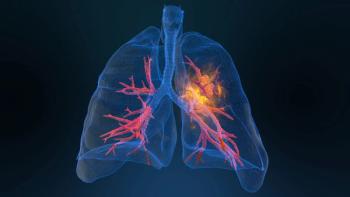
Exercise and Cancer
This slide show highlights some of the studies and analyses that have explored physical activity/exercise and its effect on cancer risk, as well as studies that examined physical activity and its effect on treatment side effects from chemotherapy, radiotherapy, and surgery.
References:
1. Lemanne D, Cassileth BR, Gubili J. The Role of Physical Activity in Cancer Prevention, Treatment, Recovery, and Survivorship. Oncology (Williston Park). 2013;27:580-5.
2. Irwin ML, Cartmel B, Gross CP, et al. Randomized exercise trial of aromatase inhibitor-induced arthralgia in breast cancer survivors. J Clin Oncol. 2015;33:1104-11.
3. Fournier A, Dos Santos G, Guillas G, et al. Recent recreational physical activity and breast cancer risk in postmenopausal women in the E3N cohort. Cancer Epidemiol Biomarkers Prev. 2014;23:1893-902.
4. Cormie P, Turner B, Kaczmarek E, et al. A qualitative exploration of the experience of men with prostate cancer involved in supervised exercise programs. Oncol Nurs Forum. 2015;42:24-32.
5. Bade BC, Thomas DD, Scott JB, Silvestri GA. Increasing physical activity and exercise in lung cancer: reviewing safety, benefits, and application. J Thorac Oncol. 2015;10:861-71.
6. Cannioto RA, Moysich KB. Epithelial ovarian cancer and recreational physical activity: A review of the epidemiological literature and implications for exercise prescription. Gynecol Oncol. 2015;137:559-73.
7. Campbell PT, Patel AV, Newton CC, et al. Associations of recreational physical activity and leisure time spent sitting with colorectal cancer survival. J Clin Oncol. 2013;31:876-85.
8. Abioye AI, Odesanya MO, Abioye AI, Ibrahim NA. Physical activity and risk of gastric cancer: a meta-analysis of observational studies. Br J Sports Med. 2015;49:224-9.
9. Battaglini CL, Hackney AC, Garcia R, et al. The effects of an exercise program in leukemia patients. Integr Cancer Ther. 2009;8:130-8.
10. McNeely ML. Exercise as a promising intervention in head & neck cancer patients. Indian J Med Res. 2013;137:451-3.
11. Cormie P, Spry N, Jasas K, et al. Exercise as medicine in the management of pancreatic cancer: a case study. Med Sci Sports Exerc. 2014;46:664-70.
12. Craike MJ, Hose K, Courneya KS, et al. Perceived benefits and barriers to exercise for recently treated patients with multiple myeloma: a qualitative study. BMC Cancer. 2013;13:319.
13. Williams PT. Reduced risk of incident kidney cancer from walking and running. Med Sci Sports Exerc. 2014;46:312-7.
14. Williams PT. Reduced risk of brain cancer mortality from walking and running. Med Sci Sports Exerc. 2014;46:927-32.
15. World Cancer Research Fund/American Institute for Cancer Research. Continuous Update Project Report. Food, Nutrition, Physical Activity, and the Prevention of Endometrial Cancer. 2013.
16. Sasvari M, Taylor AW, Gaal D, Radak Z. The effect of regular exercise on development of sarcoma tumor and oxidative damage in mice liver. J Sports Sci Med. 2011;10:93-6.
17. Romero SAD, Li QS, Mao JJ. Factors and barriers associated with changes in physical activity after cancer diagnosis Presented at the 2017 American Society of Clinical Oncology Cancer Survivorship Symposium. Abstract 162.
18. Szender JB, Cannioto R, Gulati NR, et al. Impact of physical inactivity on risk of developing cancer of the uterine cervix: a case-control study. J Low Genit Tract Dis. 2016;20:230-3.
19. Smaradottir A, Smith AL, Borgert AJ, Oettel KR. Are we on the same page? Patient and provider perceptions about exercise in cancer care: a focus group study. J Natl Compr Canc Netw. 2017;15:588-94.
Newsletter
Stay up to date on recent advances in the multidisciplinary approach to cancer.

















































































